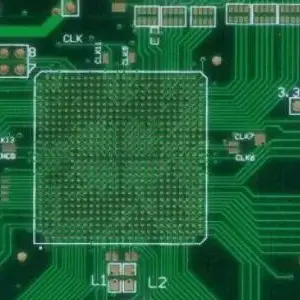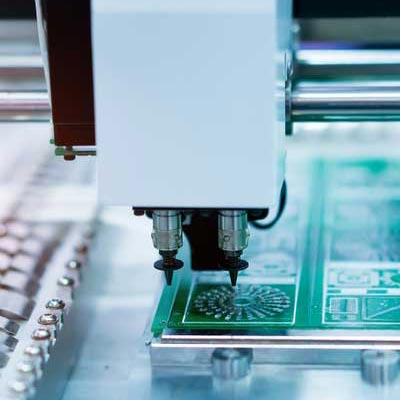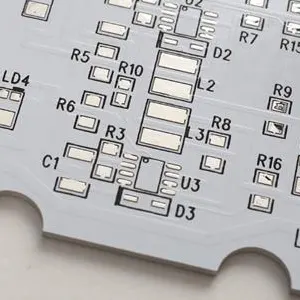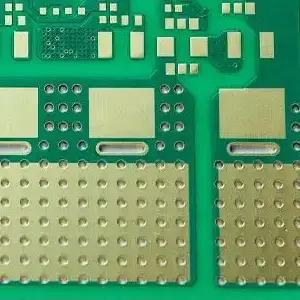Properties and Applications of Automotive Printed Circuit Boards
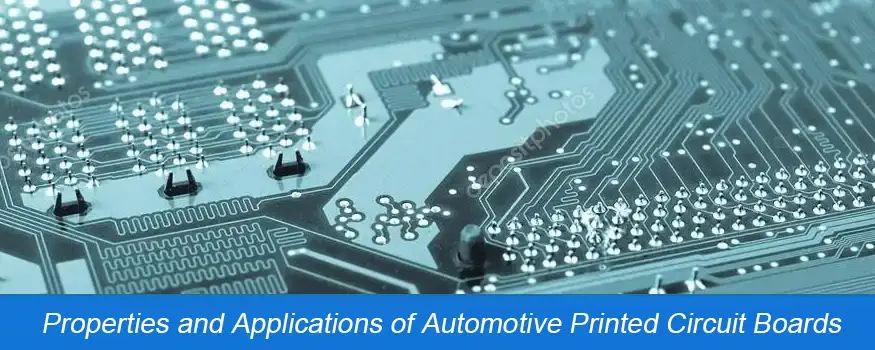
The effectiveness and other many advantages of automobile PCB decide their popularity. For example, Automotive PCBs are improving the safe function gradually and bringing satisfaction to us through increasing air conditioning, audio-frequency, and video entertainment. Reading more to know more information about automotive PCB.
The Definition Of Automotive PCB
Automotive PCBs are those PCBs applied in automotive electronic products, such as engine control, anti-lock braking system, GPS, rear view system and the, headlight and so on. Security is the most important consideration factor in the process of automotive PCB design and manufacturing.
As having more and more electronic equipment, such as head-up displays, windshield coverings, cockpit navigation systems, and other electronic equipment, we feel more relaxed when we are driving. Furthermore, we would have much higher requirements for those reliable PCBs that have no interference with other systems.
The Role of Electronic Systems in Automobiles
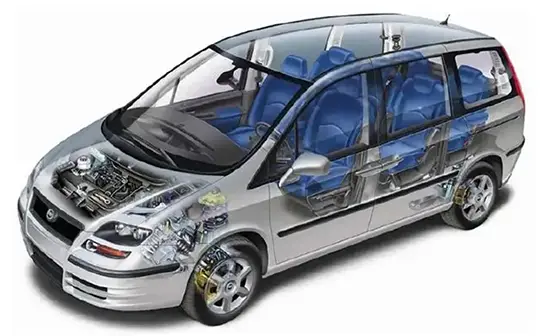
The applications of an electronic system aim to improve the performance of the automobile, including 3 aspects: environmental improvement, safety improvement, and convenient comfort.
● Environmental improvement is saving fuel oil and reducing tail gas and fuel. Achieving the transition from gas, natural gas, and bio-fuel to hybrid and pure power. So, electric vehicles are the strategic direction in the automotive industry.
● Safety improvement aims to decrease traffic accidents, from airbags, radar monitoring, stereo camera, infrared monitoring, and automatic avoidance to automatic driving. At current, self-driving cars are attracting attention and investment from most of the world.
● Generally, considering convenience and humanity, convenience and comfort took root in radio, video display, air conditioning, computer, mobile communications, Internet, navigation and electronic charges, etc.
As the stanchion of electronic equipment, automotive PCB must meet all requirements mentioned above.
The Function Of PCB In The Automobile Industry
With the automobile industry gradually improving technology and walking in innovation, currently, some applications in automobiles are based on electronic monitoring to guarantee they can operate normally.
Automotive PCB or electronic monitoring circuits can provide reliable and high-quality performance. They also provide control systems for these problems, such as pollution, fuel economy and safety regulations and so on. PCB lays the foundations of all kinds of electronic components and technology for interconnecting cars.
Performance Characteristic Of Automotive PCB
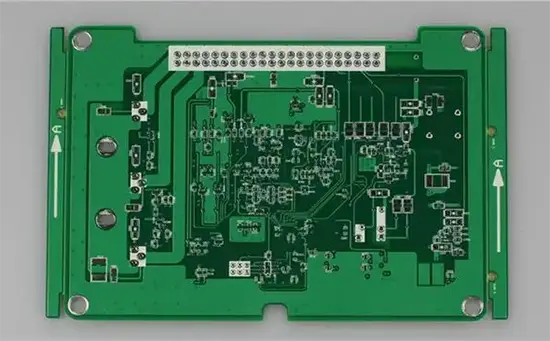
As the combination of machinery and electronic equipment, old and traditional technology with the newest science technology combined with each other by modern automobile technology, different parts in the modern automobile depend on electronic equipment with different functions to bring different missions for PCB application.
There are inorganic ceramic PCB and organic resin PCB according to the difference between automobile PCB-based materials. The main feature of ceramic PCBs is high thermal conductivity and excellent dimensional stability. Usually, they are applied in an engine system in a high-heat environment. But, poor manufacturability of ceramic PCB causes high costs during the whole PCB manufacturing process. With the growth of newly developed resin substrates which have much higher thermal conductivity, resin substrates are mainly used in most modern cars.
The Application Of Automobile PCB
Audio and video equipment of automobiles need printed circuit boards. And automobile PCB is suitable for global positional systems or GPS. Besides, other applications also need PCB, which includes an anti-lock braking system, communication equipment, power converter, engine coolant level monitor, engine timing system, LED braking lamp, distribution junction box, remote diagnosis system, safety system, transmission sensor, etc. So, it can be said that PCB is regarded as the backbone of the electrical system in the application.
The following lists are the main application of automobile PCB:
● GPS sets and ECU modules.
● Displays(number) and transmission sensor.
● Radar systems and audio and stereo components.
● AC/DC converter and engine control.
● Engine timing system and LED system.
● Occupant detector and switchboard.
Manufacturing Features Of Automobile PCB
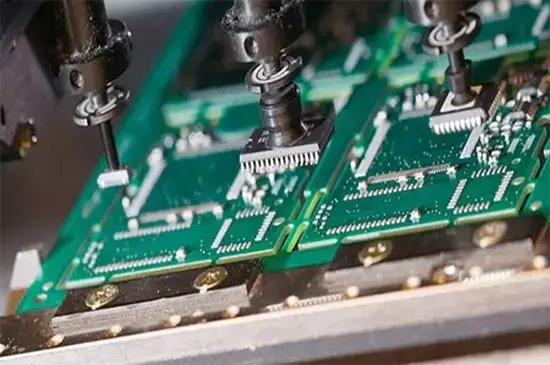
High-Frequency PCB Or Far-Range PCB
Near-field radars are similar to military radars. Automotive collision avoidance or predictive emergency braking systems depend on PCB to transmit high-frequency microwave signals. So, it’s suggested to use low dielectric loss laminate. Usually, it’s PTFE(polytetrafluoroethylene). As the substrate, PTFE, or similar high-frequency material differ from ordinary FR-4, they require different manufacturability. For example, a special drilling speed is required during the drilling process of a through hole.
Heavy/Thick copper PCB
Because of electron density and high power, cars often produce much more heat. Much more advanced transmission systems and much more electronic functions will be needed as the increase of hybrid and pure electronic cars. So, it means that there are much higher requirements for heat dissipation and a much bigger current. Therefore, to add the thickness of PCB copper, technicians will make copper lead and metal into multi-layer PCB.
It’s very easy to manufacture heavy copper double-sided PCBs, while quite difficult for heavy copper multi-layer PCBs because the difficulties are heavy copper patterns and gap filling.
Heavy copper is the inner circuit of heavy copper multi-layer PCB. After this step, pattern transfer needs a thick film with high corrosion resistance. Enough long time for the etching process, etching equipment, and technical condition must keep the best status, so these above can guarantee an excellent heavy copper circuit.
The normal multi-layer PCB stack-up can not make the resin filled completely because of the great differences between the inner conductor and the surface of the insulating laminate so that voids will appear, so technicians will suggest using large resin with thin PP(pre-pregnant). Some multi-layer PCBs contain internal circuits with different copper thicknesses, so we can use different semi-cured PP(pre-pregnant) to distinguish the large area and small area.
Embedding components
In the beginning, in order to increase the assembling density and decrease the overall size of products, embedded components PCB were applied in mobile phones, which is very important to other electronic products. This is the factor of embedded technology that is applied in automotive electronics.
There are many embedded PCB manufacturing options based on components’ embedded ways:
● Milling the slot first, then assembling SMD through wave soldering or conductive paste;
● Through wave soldering, the film patch is first assembled on the inner circuit;
● Printing thick film components on ceramic laminates;
● Assembling SMD through wave soldering and then covering by resin. This embedded method is heat-resistant, moisture-resistant, impact resistant, and high reliable. It’s much more suitable for automobiles.
HDI technology
Cars also need HDI PCB in entertainment and communications, which are similar to smartphones or tablets. So, automobile PCB must adopt the technology of micro-hole drilling, electroplating and interconnection.
Type of PCB substrates that can be used in the Automotive PCBs
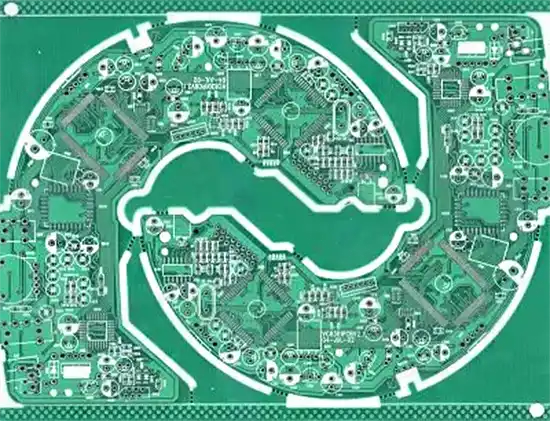
Ceramic PCB substrates are made of aluminum oxide and aluminum nitride, so to withstand the high-temperature changes, these finished ceramic PCBs are applied in the engine room. PTFE substrates with high-frequency changes are usually applied in car safety systems. Metal can provide good electrical insulation and good thermal conductivity, and excellent heat dissipation, so metal core PCB is applied in anti-lock braking systems. And copper can change shape in high temperatures, high frequency, and high current, so copper PCB is applied in security and signal systems.
According to the previous rule, if all automobile PCBs want to be used, they must pass strict thermal cycle testing, thermal shock testing, and temperature and humidity deviation(THD). Now, with the introduction of these PCBs, which are applied in driver alarms and blind spot detection, and so on, cars are becoming more and more advanced.
Using PCB in the automobile can improve these performances below: halogen-free PCB protects the environment, strengthen security through control monitoring, and makes feel very comfortable when enjoying entertainment, mobile communications and the Internet.
Suitable Compatible PCB Types Of Automobile
Single-sided and double-sided PCBs (rigid/flexible) is usually sufficient to be used for speedometers and air conditioners. While for car audio and monitoring systems, double-layer PCB, multi-layer PCB, or flexible PCB play a very obvious role. On the other hand, automotive, communication equipment, Wireless positioning device, and security control system need multi-layer PCBs, HDI PCBs, or rigid-flexible PCBs. Metalcore or rigid-flex PCBs are commonly applied in designing engine systems and power transmission control systems, while embedded PCBs are applied in vehicle power controllers and navigation devices.
Flexible PCB is also used in the front dashboard of automotive electronics, which connect large LED and LCD displays to the processor board or connect various electronic modules to each other through the flexible PCB. Lightweight, flexible PCBs can be adjusted or bent in the small space of the car deck or dashboard. A combination of rigid and flexible PCBs, called rigid and flexible PCBs, can also be found in automotive PCBs.
Establish Your Next Automobile PCB
As you are preparing to promote your next great idea to market, Unitepcb would be your first PCB cooperator. By focusing on engineering and design services in the automobile field, we can help you cut costs and meanwhile keep a high standard of reliability.
Testing, modifying, and finishing the R&D of your component, and using our advanced original design method to make any modification you need to increase the system support. You would make the last decoration for your next automobile innovation.

